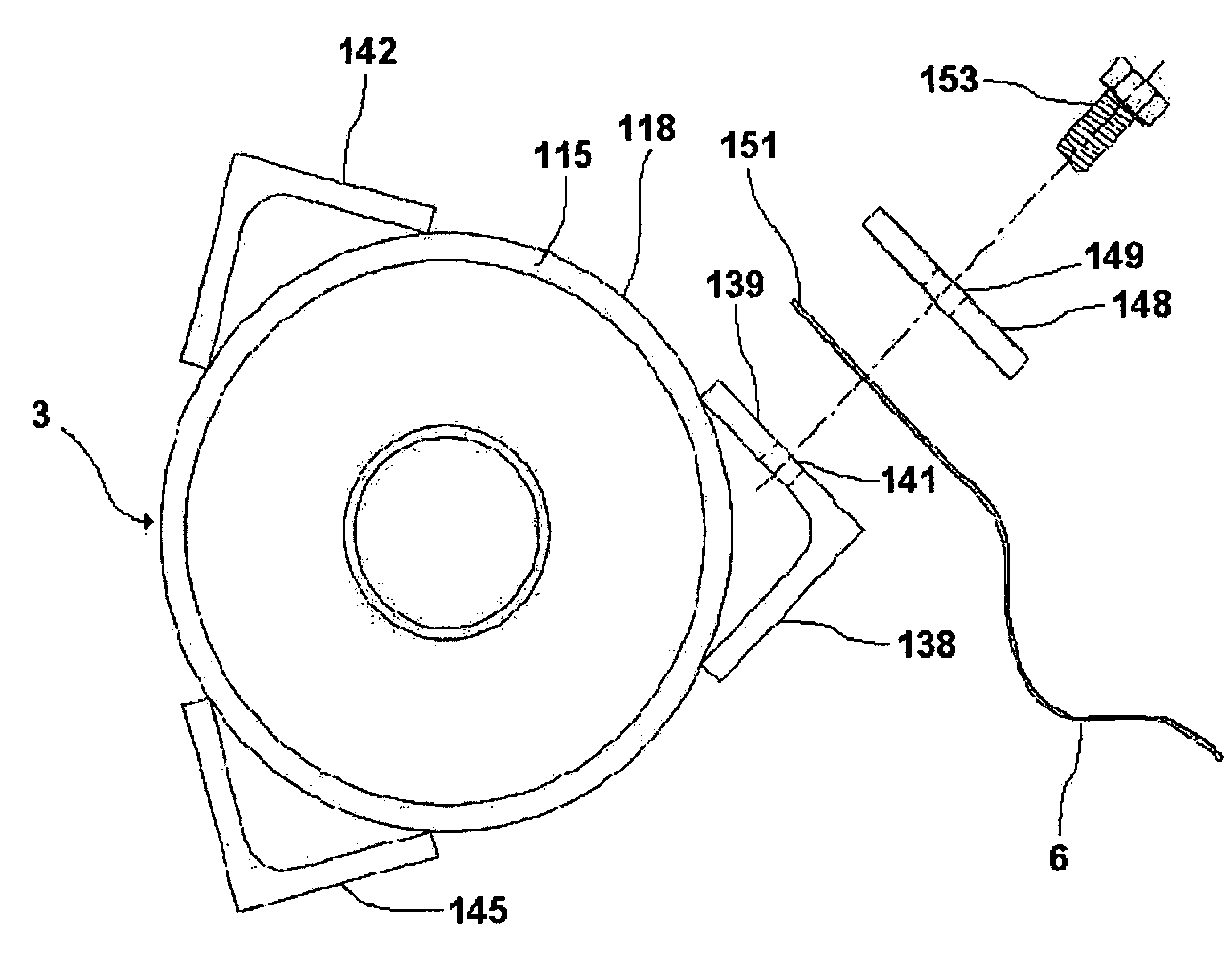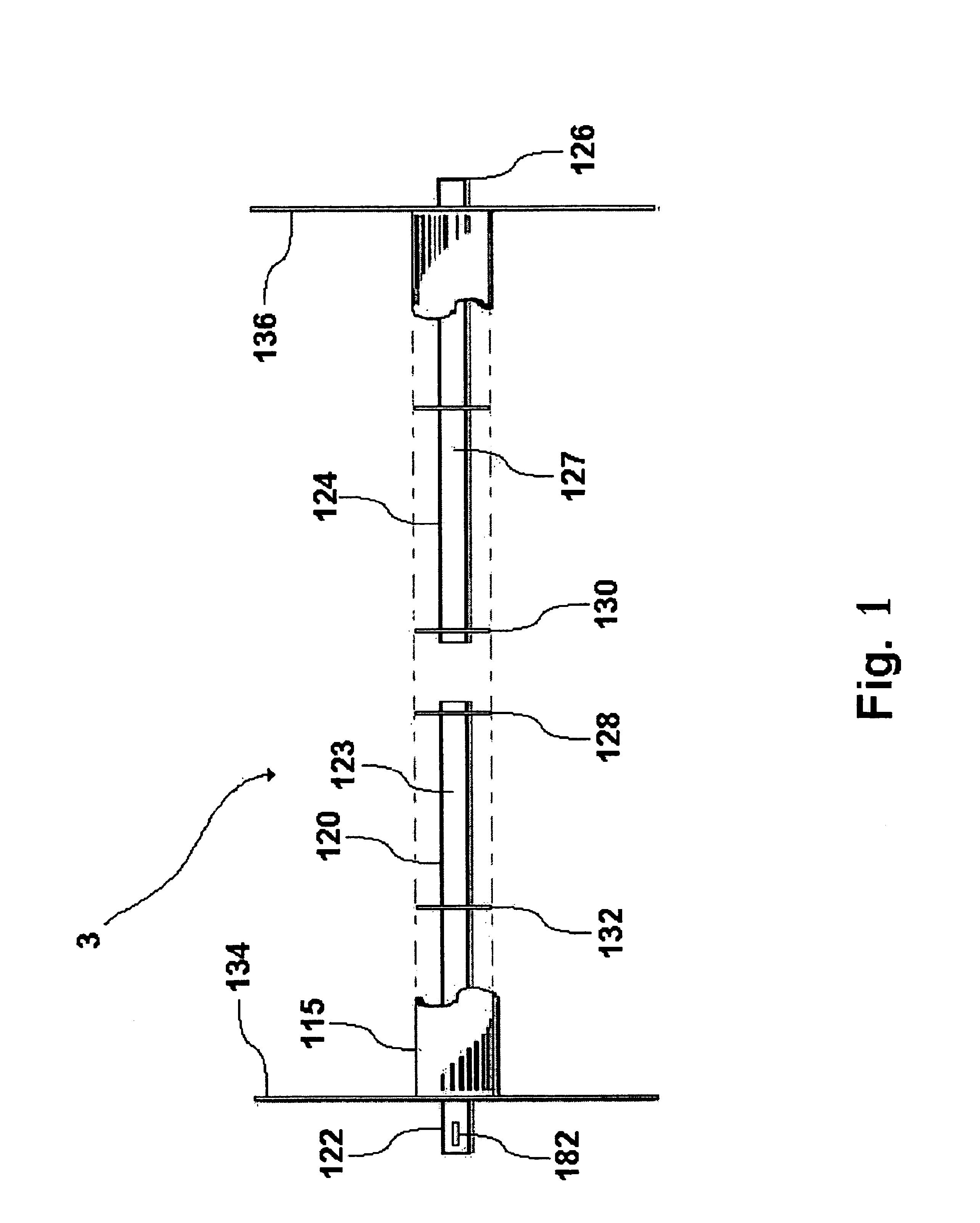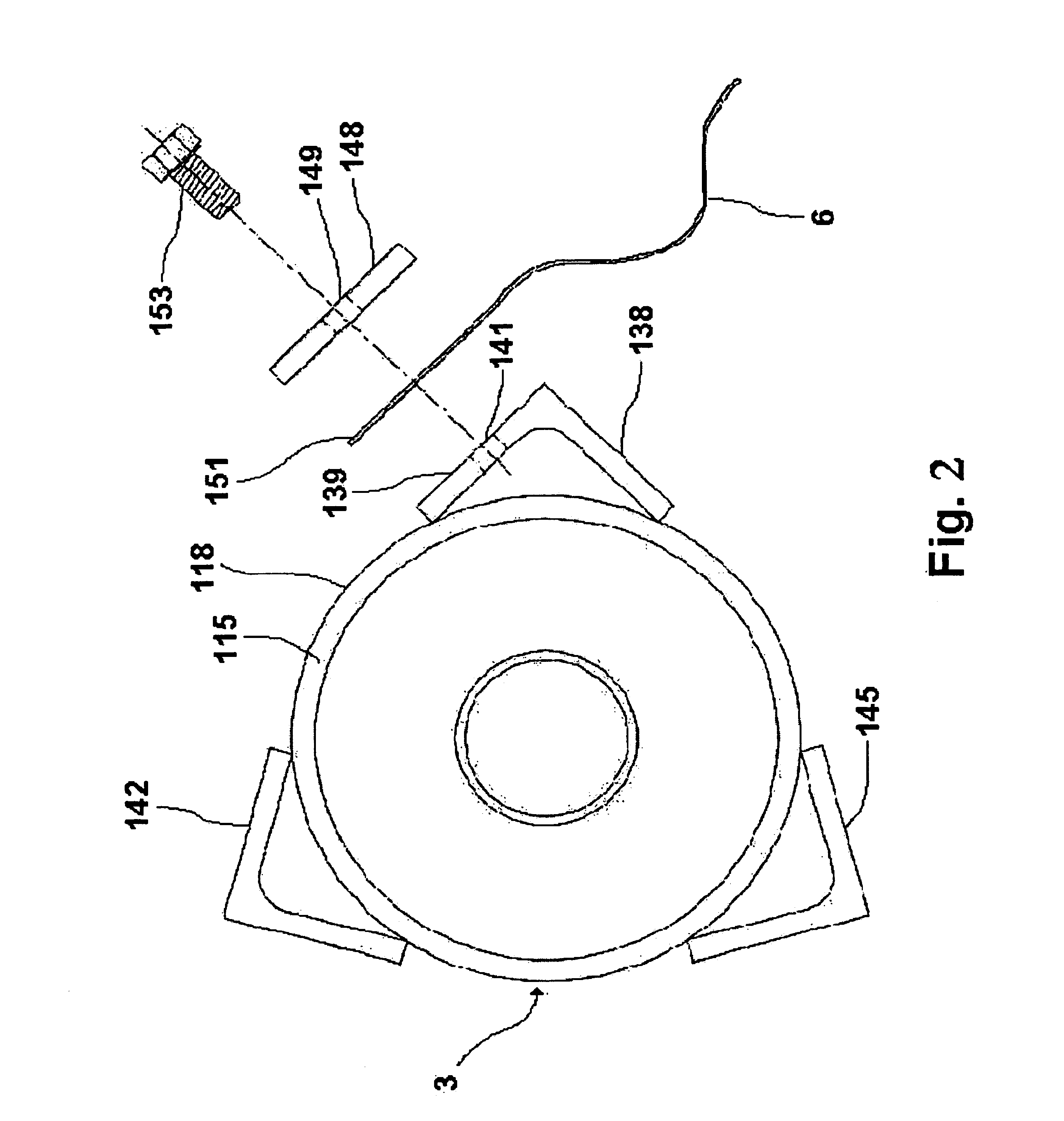Tarpaulin deployment device
- Summary
- Abstract
- Description
- Claims
- Application Information
AI Technical Summary
Benefits of technology
Problems solved by technology
Method used
Image
Examples
Embodiment Construction
FIG. 1 shows a cut away side view of one embodiment of the spindle 3. The spindle 3 is used to take up and deploy the tarpaulin 6. The spindle 3 is comprised of a spindle casing 115, a first spindle axle 120, and a second spindle axle 124. In one embodiment the spindle 3 also employs reinforcement disks 128,130,132. The spindle casing 115 is a cylindrical hollow metal tube having a constant inside diameter. The first spindle axle 120 is a solid metal rod having a round cross-section and a constant diameter. Its overall length is less than one half the length of the spindle casing 115. The second spindle axle 124 is a solid metal rod having a round cross-section and a constant diameter substantially equal to the diameter of the first spindle axle 120 and having a length less than one half the length of the spindle casing 115. The outside end 122 of the first spindle axle 120 or the outside end 126 of the second spindle axle 124 may include a slot 182 or other means for assisting with...
PUM
 Login to View More
Login to View More Abstract
Description
Claims
Application Information
 Login to View More
Login to View More - Generate Ideas
- Intellectual Property
- Life Sciences
- Materials
- Tech Scout
- Unparalleled Data Quality
- Higher Quality Content
- 60% Fewer Hallucinations
Browse by: Latest US Patents, China's latest patents, Technical Efficacy Thesaurus, Application Domain, Technology Topic, Popular Technical Reports.
© 2025 PatSnap. All rights reserved.Legal|Privacy policy|Modern Slavery Act Transparency Statement|Sitemap|About US| Contact US: help@patsnap.com



